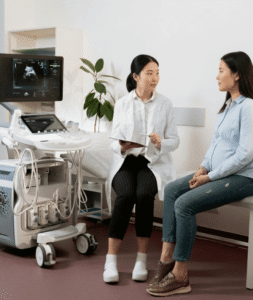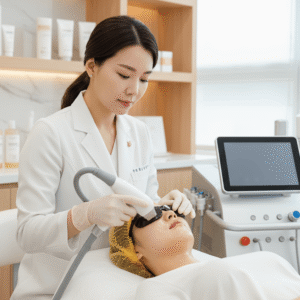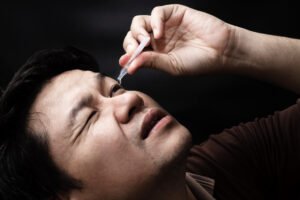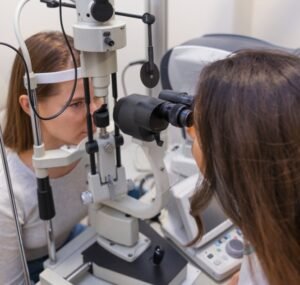What it is
A pathology report review is the process of examining and interpreting the results of a biopsy or surgical specimen. After a skin lesion, mole, or tissue sample is removed, it is sent to a pathology lab, where a specialist examines it under a microscope.
The pathology report contains critical information such as:
- Diagnosis → Whether the tissue is benign, malignant, or inflammatory.
- Histological features → Cell type, depth, margins, and structure.
- Additional findings → Infection, atypical cells, or other abnormalities.
💡 In Korea, pathology reviews are an essential step in mole removal, nevus excision, and suspicious lesion management, ensuring both medical safety and cosmetic planning.
Why it’s done
A pathology report review is done to provide definitive clarity on a diagnosis:
✔ To confirm or rule out cancer (e.g., melanoma, basal cell carcinoma, squamous cell carcinoma)
✔ To differentiate benign vs. precancerous conditions
✔ To guide treatment decisions (e.g., further surgery, laser, monitoring)
✔ To reassure patients if a lesion is harmless
✔ To plan follow-up care for chronic or recurring skin conditions
In Korea, patients value precision and reassurance, so pathology reviews are often explained carefully by dermatologists with visuals and patient-friendly breakdowns.
Alternatives
There is no direct substitute for pathology in diagnosis, but supporting tools include:
➡️ Dermatoscopy – Non-invasive imaging for initial evaluation.
➡️ Digital skin monitoring – Photographic tracking of changes over time.
➡️ Molecular testing – In some Korean labs, genetic tests may complement pathology in complex cancer cases.
However, pathology remains the gold standard.
Preparation
Before reviewing a pathology report in Korea:
- 🔹 Patient history → Doctor revisits symptoms, family history, and mole/lesion changes.
- 🔹 Biopsy details → Type of biopsy (punch, shave, excision) noted, along with location and size.
- 🔹 Consultation setting → Many Korean clinics offer same-day or follow-up sessions with pathology slides displayed digitally.
How it’s Done
The process of pathology report review involves:
- Receiving results → Pathology lab sends written findings to the dermatologist.
- Report breakdown:
- Gross description: Size, shape, and color of tissue sample.
- Microscopic findings: Cellular patterns, presence of atypical cells.
- Margins: Whether abnormal tissue extends to the edge (important for surgical clearance).
- Diagnosis: Final categorization (benign mole, melanoma, etc.).
- Doctor’s explanation → Dermatologist reviews report with patient, using images or charts.
- Next steps → Depending on results:
- Benign → No further treatment or cosmetic refinement.
- Precancerous/malignant → Further excision, laser, or referral to oncology.
- Inflammatory → Medical treatment (topicals, oral medication).
⏳ Duration: 15–30 minutes consultation
📅 Follow-up: Based on diagnosis—may range from routine monitoring to surgical re-excision.
Recovery
There is no recovery needed for the review itself, but follow-up depends on diagnosis:
➡️ Benign results → Normal skincare resumes, scar care may be advised.
➡️ Precancerous lesions → Minor procedures or topical therapies may follow.
➡️ Cancerous results → Referral for further excision, oncology, or advanced therapies.
Korean dermatology clinics often provide scar management, skin-brightening products, and holistic aftercare even when the biopsy is benign, to ensure the treated area heals smoothly.
Complications
Pathology reviews themselves are safe, but possible issues include:
⚠ Concerns patients may face:
- Anxiety while waiting for results
- Misinterpretation of medical jargon if not clearly explained
- Rare need for a second opinion if findings are unclear
Korean dermatologists reduce these concerns by presenting results with visuals, simplified explanations, and clear treatment roadmaps.
Treatment Options in Korea
Pathology reviews are integrated into Korean dermatology services, especially after mole removal or suspicious lesion evaluation.
🇰🇷 Typical Korean Practices:
- Dermatoscopy + biopsy + pathology → A streamlined workflow for skin lesion management.
- Digital slide review → Some clinics show microscopic images to patients for transparency.
- Scar care programs → Post-biopsy care with LED therapy, creams, and scar gels.
- Holistic care → Combination of medical treatment and aesthetic refinement for patient satisfaction.
✅ Final Thoughts
Pathology report review in Korea is a critical step in ensuring accurate diagnosis, safe treatment, and peace of mind for patients with moles, lesions, or chronic skin conditions. By combining cutting-edge pathology labs, dermatologist expertise, and K-beauty recovery care, Korea ensures that patients receive both medical accuracy and cosmetic consideration in their skin health journey.












